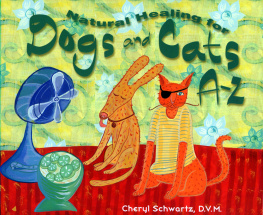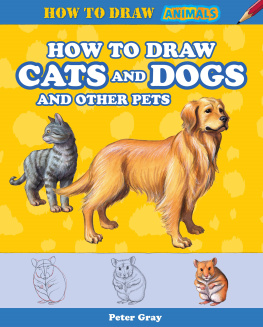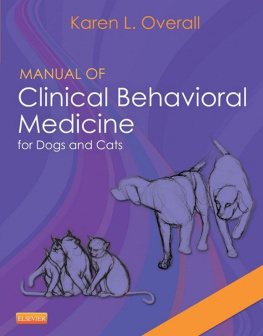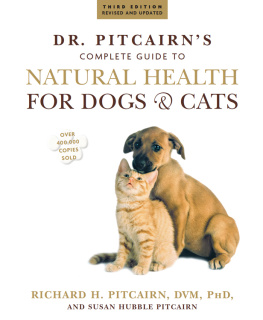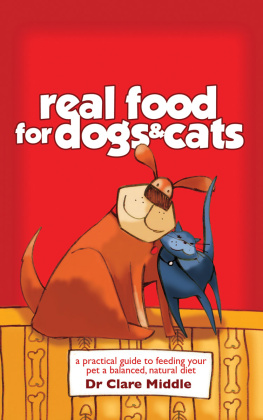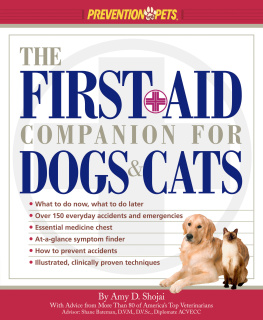
This edition first published 2012 2012 by John Wiley & Sons, Inc.
Wiley-Blackwell is an imprint of John Wiley & Sons, formed by the merger of Wileys global Scientific, Technical and Medical business with Blackwell Publishing.
Editorial offices: 2121 State Avenue, Ames, Iowa 50014-8300, USA
The Atrium, Southern Gate, Chichester, West Sussex, PO19 8SQ, UK
9600 Garsington Road, Oxford, OX4 2DQ, UK
For details of our global editorial offices, for customer services and for information about how to apply for permission to reuse the copyright material in this book please see our website at www.wiley.com/wiley-blackwell.
Authorization to photocopy items for internal or personal use, or the internal or personal use of specific clients, is granted by Blackwell Publishing, provided that the base fee is paid directly to the Copyright Clearance Center, 222 Rosewood Drive, Danvers, MA 01923. For those organizations that have been granted a photocopy license by CCC, a separate system of payments has been arranged. The fee codes for users of the Transactional Reporting Service are ISBN-13: 978-0-8138-0793-5/2012.
Designations used by companies to distinguish their products are often claimed as trademarks. All brand names and product names used in this book are trade names, service marks, trademarks or registered trademarks of their respective owners. The publisher is not associated with any product or vendor mentioned in this book. This publication is designed to provide accurate and authoritative information in regard to the subject matter covered. It is sold on the understanding that the publisher is not engaged in rendering professional services. If professional advice or other expert assistance is required, the services of a competent professional should be sought.
Library of Congress Cataloging-in-Publication Data
Management of pregnant and neonatal dogs, cats, and exotic pets / edited by Cheryl Lopate.
p. cm.
Includes bibliographical references and index.
ISBN 978-0-8138-0793-5 (pbk. : alk. paper) 1. DogsBreeding. 2. CatsBreeding. 3. Wild animals as pets. 4. Veterinary neonatology. I. Lopate, Cheryl.
SF427.2.M36 2012
636.7'1dc23
2012002592
A catalogue record for this book is available from the British Library.
Wiley also publishes its books in a variety of electronic formats. Some content that appears in print may not be available in electronic books.
Disclaimer
The publisher and the author make no representations or warranties with respect to the accuracy or completeness of the contents of this work and specifically disclaim all warranties, including without limitation warranties of fitness for a particular purpose. No warranty may be created or extended by sales or promotional materials. The advice and strategies contained herein may not be suitable for every situation. This work is sold with the understanding that the publisher is not engaged in rendering legal, accounting, or other professional services. If professional assistance is required, the services of a competent professional person should be sought. Neither the publisher nor the author shall be liable for damages arising herefrom. The fact that an organization or Website is referred to in this work as a citation and/or a potential source of further information does not mean that the author or the publisher endorses the information the organization or Website may provide or recommendations it may make. Further, readers should be aware that Internet Websites listed in this work may have changed or disappeared between when this work was written and when it is read.
Contributors
Cynthia R. Bishop
Department of Biology and Pre-Professional Health Sciences, Seattle Pacific University
Seattle, WA; Bothell, WA
Mark E. Burgess
Southwest Animal Hospital/The Exotic Animal Practice
Beaverton, OR
Margret L. Casal
Section of Medical Genetics, School of Veterinary Medicine, University of Pennsylvania
Philadelphia, PA
Jill Cline
Science Officer, K9 Crazy Consulting
Pine Bluff, AR
Cheri A. Johnson
College of Veterinary Medicine, Michigan State University
East Lansing, MI
Cheryl Lopate
Reproductive Revolutions and Wilsonville Veterinary Clinic
Wilsonville, OR
Margaret V. Root Kustritz
Veterinary Clinical Sciences, College of Veterinary Medicine, University of Minnesota
St. Paul, MN
Kersti Seksel
Sydney Animal Behaviour Service
Seaforth, Australia
Daniele Zambelli
Dipartimento Clinico Veterinario, Servizio di Riproduzione Animale, Facolt di Medicina Veterinaria
Ozzano Emilia (Bo), Italy
Preface
This book is dedicated to all the dog, cat, and exotic breeders in the world who are striving to improve their breeds through ethical and thoughtful breeding practices. These breeders always ask Why? when things go wrong and then make every effort to correct them on the next breeding. They also take note when things go right and try to recreate the positives while constantly making improvements in their lines and breeds. Many of these clients have been breeding for countless years, while others are new to the arena; yet both ends of the spectrum seek accurate, scientific information and research on which to base their breeding practices. It is these clients who make us strive to constantly learn more, study more, and work harder in order to help them achieve their goals. I am proud to work alongside these clients every day.
I would also like to thank all those who have mentored me in my career. From Gail Todter, the breeding farm manager at Bentwood Farms in Waco, Texas, who first piqued my interest in reproduction; to Ed Squires and Peter Elsden at Colorado State University, who cultivated that interest; and finally, to Walter Threlfall at The Ohio State University, who delivered me into the world of small animal reproduction (as well as many other species) and further taught me to be a critical thinker. After graduating from veterinary school, it was all the members of The Society for Theriogenology and the Diplomates of the American College of Theriogenologists who were always willing to teach and mentor anyone with an interest in reproduction, always seeking to draw another into their fold who was as eager as they were to assist with the creation of new life in whatever species happened to walk through their doors. Specifically, the mentorship and collegiality of Peggy Root Kustritz from the University of Minnesota, Cathy Gartley from the University of Guelph, as well as Jim Callahan and Larry Horstman from Purdue University were pivotal in my growth first as a resident and then as a new Diplomate. Without the guidance of each of these people, as well as countless others, I would not be sitting where I am today, writing the preface to this textbook on small animal neonatology.
Credit and thanks also go to each of the other contributors to this textbook, who gave of their time and extensive knowledge to create this work.
The textbook literature is sparse in the area of small animal neonatology. This is what inspired me to agree to edit this text on small animal neonatology. As the editor of this text, I hope that veterinarians, veterinary technicians, educators, and breeders will all find this book a valuable resource to place on the shelves of their libraries and to have a resource to reach for when questions arise.
Cheryl Lopate
Kennel Management and Nutrition of the Bitch and Her Offspring
Jill Cline
There is no denying that kennel management, husbandry, and nutrition play equal roles in determining the success of a mating to bear live, viable puppies. Simple management of each of these factors will significantly improve the likelihood of a healthy breeding stock and puppies.
Next page

